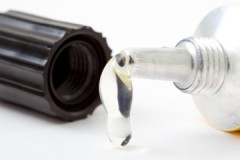 Glue stains on a plastic surface can appear even with careful work. If time was lost and the composition had time to dry, it will not be possible to remove it with water.
Glue stains on a plastic surface can appear even with careful work. If time was lost and the composition had time to dry, it will not be possible to remove it with water.
You will need substances that can dissolve the adhesive mass without harming the surface on which it comes in contact.
About how quickly and safely remove the glue from plastic, read the article.
Content
How can you remove glue from plastic?
The main difficulty that you may encounter when cleaning is choosing a product that can dissolve the glue but not damage the plastic surface.
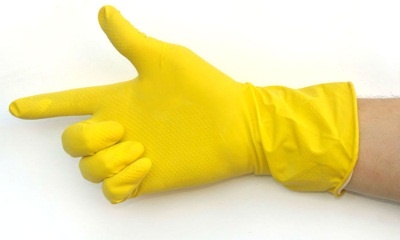 If possible, you should use gentle formulations, for example:
If possible, you should use gentle formulations, for example:
- soap,
- soda,
- petrol,
- boiling water.
If they do not achieve the desired result, switch to aggressive means, including:
- acetone,
- solvent,
- Dimexide, etc.
To prevent the plastic from melting and becoming stained after the procedure, you must not violate the instructions and exceed the specified exposure time.
How to remove soda?
Baking soda will help deal with fresh stains. It is used to remove non-aggressive compounds that have a water-soluble base, such as PVA or office glue.
Mode of application:
- Prepare a thick soda slurry.
- Apply it to the stain using a sponge.
- Leave to act for 20 minutes.
- Clean the surface with a soft brush.
Acetone
Acetone will help deal with difficult stains from persistent Moment or Second adhesive. Since different types of plastic react differently to solvent, you need to test it on an inconspicuous area.
 Mode of application:
Mode of application:
- apply the product to the stain;
- leave to act for 30 minutes;
- remove glue with a rag.
Even old stains can be treated with acetone. If there are concerns that it may ruin the plastic, it is replaced with nail polish remover. It contains a lower concentration of acetone, so it acts more gently.
Soap
Soap solution is a non-aggressive and safe composition that can be used to remove glue from plastic. The only drawback of this product is its weak cleaning ability. Old stains are difficult to treat in this way.
Mode of application:
- Prepare a highly concentrated soap solution. It should be thick, like sour cream. For 2 tablespoons of grated soap, take a tablespoon of warm water.
- Apply the paste to the surface that needs cleaning.
- Leave to soak for 20 minutes.
- Remove the glue using a spatula or other suitable object, and rinse the plastic with clean water.
It is possible that in order to completely get rid of stains, repeated soaking and layer-by-layer removal of glue will be required. Therefore, this method cannot be called fast.
Solvent
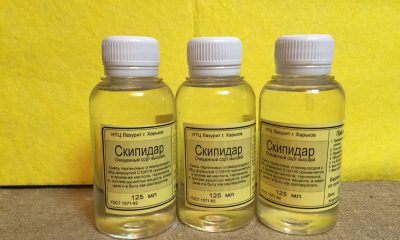 You can use paint thinner to remove the glue. The choice is made on such compositions as:
You can use paint thinner to remove the glue. The choice is made on such compositions as:
- White Spirit;
- Xylene;
- Solvent;
- solvent 646 or 647;
- Turpentine.
All of them have an aggressive base, so you need to use them on a plastic surface carefully, not exceeding the exposure time of 15 minutes.
Mode of application:
- apply the composition to a cotton pad or cloth;
- wet the stain;
- leave to soak for 5-15 minutes, during this time you need to monitor the reaction of the plastic product; in case of any changes, the product is removed;
- Wipe off remaining glue with a soft cloth and wash the surface with clean water.
Hairdryer
To remove glue from plastic, you can resort to a thermal treatment method. This method is safe if you strictly follow the instructions:
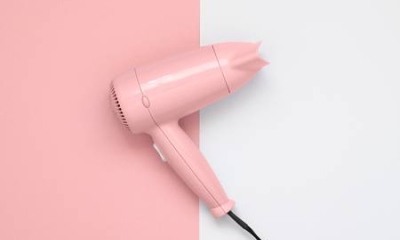 Turn on the hairdryer on low heat.
Turn on the hairdryer on low heat.- Direct a stream of air onto the stain. You need to hold the device at a distance of up to 10 cm. Since the power of hair dryers differs depending on the model, you need to monitor the reaction of the plastic by moving the device closer or further away.
- Wait until the glue becomes soft.
- Remove it with a paper napkin.
Do not allow the surface to overheat. If this recommendation is not followed, the plastic may become deformed. Under no circumstances should a hair dryer be used to carry out the work.
Boiling water
You can soften the glue using boiling water. The procedure should be as follows:
- Turn on hot water and place the plastic product that needs cleaning under the stream. Leave to soak for 10 minutes.
- If it is not possible to use tap water on the item, boil it in a kettle and apply it to the stain in any convenient way. The older the dirt, the longer it will soak.
- When the composition becomes soft, it is removed with a rag.
If it was not possible to remove all the glue the first time, repeat the procedure.
Anticlean
Anti-glue is designed specifically for removing persistent compounds (Superglue Moment, Second, etc.). The product is available in a small tube of 5 g.
 Mode of application:
Mode of application:
- apply the gel to the stain, you need to act precisely, trying not to get it on a clean area of plastic;
- leave to act for 5-10 minutes;
- Remove the softened mixture using a paper towel.
A tube of Anti-Glue costs about 100 rubles. You can purchase it in departments with household chemicals and building materials.
How to remove stains with gasoline?
Gasoline helps remove glue from plastic. It has a pronounced odor, so it should be used in rooms with good ventilation.
Mode of application:
- Apply gasoline to a cotton pad.
- Wipe the contaminated surface with it. If the stain is old, the disc can be left as a compress for 20 minutes.
- Completely remove the composition.
- Rinse the plastic with warm water.
Kerosene can be used in a similar way.
Dimexide
Dimexide is a drug on the basis of which an antimicrobial drug is prepared.
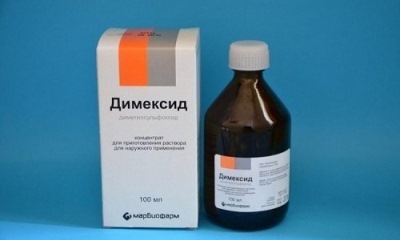 Mode of application:
Mode of application:
- moisten a clean cloth with Dimexide;
- attach it to a plastic surface;
- press the material and leave for 2 minutes;
- remove softened glue;
- Wipe the area with a clean damp cloth.
Dimexide acts quickly, so you can’t leave it on for longer than 2-5 minutes.
Alcohol
Alcohol dissolves glue well, at the same time it is absolutely safe for plastic.Therefore, you can use it without fear of damaging the material.
Mode of application:
- Soak a cotton pad or clean cloth in alcohol.
- Wipe the contaminated surface with it.
- If necessary, leave the compress for 20-30 minutes.
- Remove stain.
If you fail to remove the glue the first time, repeat the procedure. As a replacement for pure alcohol, you can use vodka or cologne.
Wiper
The glass cleaner contains a certain percentage of alcohol, so it can be used to remove adhesive from the surface of plastic products. The effect is enhanced by the surfactant or soap included in its composition.
Features of removing different types of adhesive composition
Depending on the type of glue, They use different means to remove it:
 PVA - water, boiling water, soap solution, soda.
PVA - water, boiling water, soap solution, soda.- Superglue, Moment – acetone, Anti-glue.
- Titanium – solvents, acetone.
- Cosmofen - solvents, Dimexide.
- Hot melt adhesive - hair dryer.
- Silicate glue – Dimexide, solvent, gasoline.
- Liquid nails - acetone.
- Silicone - alcohol, glass cleaner, hot water.
Read about how to remove glue from stickers from plastic. Here.
Helpful information
Recommendations to be followed when carrying out work:
- Begin removing the glue immediately after it gets on the plastic surface. Once it hardens, it will be much more difficult to deal with the stain.
- When working with solvents, do not rub the surface too hard. It is enough to blot the sticky mark with a soft cloth.
- Colored plastic may become covered with white spots where it is exposed to the solvent, so first test it on an inconspicuous area.
- To remove a thick layer of glue, use hard but not sharp objects, for example, a rubber spatula. It is recommended to move in one direction, rolling the sticky substance into a ball.
Conclusion
Dealing with glue stains on plastic is easy if you use the right product. The stronger the adhesive, the more aggressive the substance must be to remove it.
The main rule is not to leave the product on the surface for a long time.so as not to provoke its deformation and fading.
